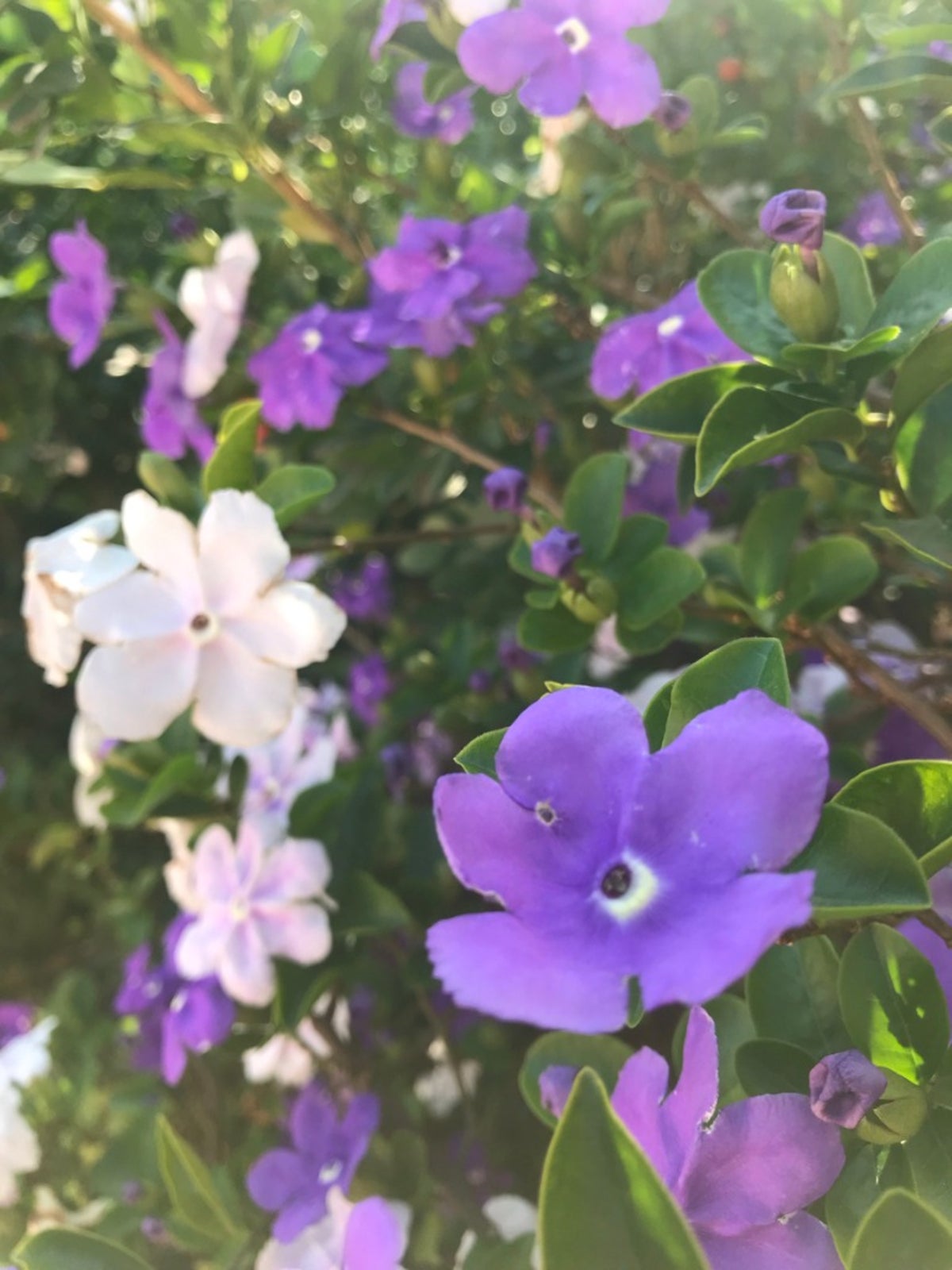Brunfelsia Shrubs: How To Grow A Yesterday, Today, Tomorrow Plant


The aptly named yesterday, today, tomorrow shrub (Brunfelsia spp.) produces a fascinating display of flowers from spring until the end of summer. The flowers start out purple and gradually fade to lavender and then white. The shrub also has delightfully fragrant flowers of all three colors throughout its blooming season. Find out how to grow a yesterday, today, and tomorrow plant here.
Yesterday, Today, Tomorrow Planting Instructions
Yesterday, today, and tomorrow plant care is easy when the shrub is grown in warm, nearly frost-free climates of USDA plant hardiness zones 9 through 12. In cooler climates, grow the shrub in a container and bring it indoors once frost threatens
. Yesterday, today, and tomorrow shrubs sustain leaf and twig damage when exposed to freezing temperatures. Yesterday, today, tomorrow shrubs will grow in any light exposure from sun to shade, but they do best when they receive morning sun and afternoon shade or dappled sunlight all day. They aren't picky about soil type, but the planting location should be well-draining.
Plant the shrub in a hole as deep as the root mass and twice as wide. Remove the plant from its container, or if it is wrapped in burlap, remove the burlap and the wires that hold it in place. Place the plant in the hole with the soil line even with the surrounding soil. Planting the shrub deeper than the level at which it grew in its container can lead to stem rot.
Fill in the hole around the roots with soil, pushing down on the soil as you go to remove any air pockets. When the hole is half full, fill it with water and wait for it to drain. Fill the hole to the top with soil and water deeply to saturate the root zone. Do not fertilize at planting time.
Yesterday, Today, Tomorrow Plant Care
As part of your yesterday, today, and tomorrow plant care, water the shrub during dry spells to keep the soil from completely drying out and fertilize once a year in spring. Yesterday, today, and tomorrow shrubs grow 7 to 10 feet (2-3 m.) tall with a spread of up to 12 feet (4 m.). Leaving them unpruned at their natural height gives them a casual appearance.
By selectively pruning out the taller stems, however, you can maintain a height as short as 4 feet (1 m.)— an ideal height for foundation plantings. These shrubs are very dense, so thinning to open up the shrub a little improves the health and appearance of the plant as well.
Sign up for the Gardening Know How newsletter today and receive a free copy of our e-book "How to Grow Delicious Tomatoes".
Yesterday, today, and tomorrow looks great in mixed shrub borders, in foundation plantings, and as hedges. You can also try planting yesterday, today, and tomorrow away from other shrubs as a specimen plant that stays interesting throughout the year.

Jackie Carroll has written over 500 articles for Gardening Know How on a wide range of topics.